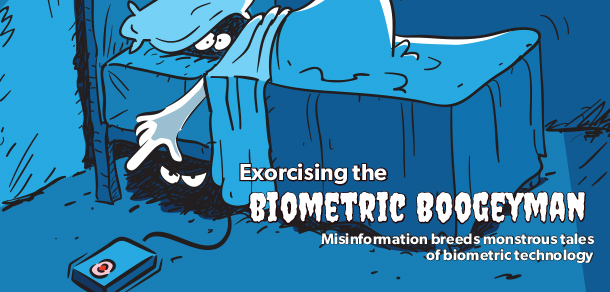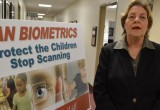Shedding light on Florida’s biometric ban
29 September, 2014
category: Biometrics, Government
Déjà vu all over again: Anti-RFID legislation followed similar pattern
In 2005, the identification industry had a wakeup call when parents protested the use of RFID tags in student ID badges at Brittan Elementary School in Sutter, Calif.
RFID tags were used to take attendance at the school when the children walked in the door. The plan was to eventually place scanners around the school to monitor student movement throughout the day. But it didn’t get that far.
California State Sen. Joe Simitian, the Democratic lawmaker where the school is based, still has legislation pending that would restrict, if not prohibit altogether, the use of different types of RFID and contactless technology.
Simitian’s legislation served as a rallying cry for many ID vendors. Prior to that, vendors hadn’t given much thought to educating lawmakers on what their technology does or how it works. Now, many ID vendors have lobbyists who track the different bills and attempt to combat restrictive legislation.
The biometrics market may have to take a page from this book and employ its own lobbyists so that legislators are better educated on how biometric technology works.
IBIA makes case for biometrics in schools
The International Biometric and Identification Association (IBIA) advocates the use of biometrics in schools for various applications. The organization says that the technology is not a threat to privacy but rather a privacy enabler.
Biometric data is already well protected. In the difficult and unlikely case that a person hacks a biometric database, all the hacker receives is the digital representation of the biometric – a string of ones and zeros that make up the template. This digital representation does not provide access to the biometric image or any biographic data.
As a best practice to protect student privacy, IBIA recommends storing only the biometric templates and deleting them when a student leaves the school. Because templates cannot be used to search law enforcement biometric databases, student privacy is further enhanced.
It is not the biometric but rather the biographic data that needs the most protection, according to the organization. Names, addresses, dates of birth, genders and social security numbers have been the data targeted in the vast majority of highly publicized identity thefts, not biometric data.
The IBIA advocates biometrics for the following applications in schools:
- School cafeterias: Biometric use increases speed and efficiency so that students have enough time to eat; curtails bullying and theft of lunch money; protects the privacy of students on free or reduced cost government lunch programs; and ensures auditable and accurate record keeping for reimbursement from the federal government’s $13 billion food programs.
- School security: Biometric use at school entrances ensures that those entering the schools belong there; matches authorized parents or guardians with children to prevent kidnapping; and ensures that children board the correct buses and get off at their correct stops.
- School efficiency: Biometric use facilitates accurate recordkeeping and compliance with federal requirements, thus saving administrative time to be dedicated to the students.




